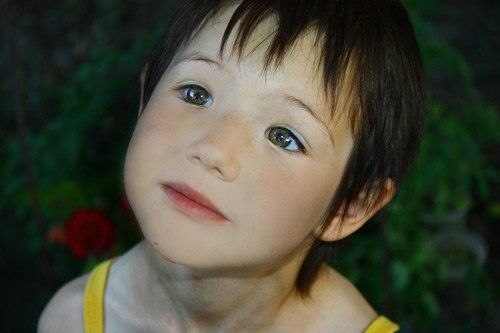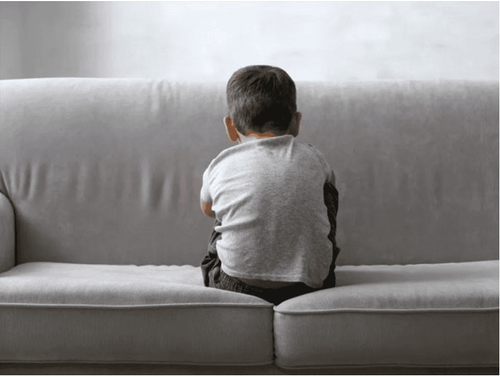This is an automatically translated article.
Autism is a common mental retardation in young children. Without early detection and timely treatment intervention, children may not overcome autism and may even develop more severe burdens to the family and society.
1. What is autism?
Autism is a brain disorder that limits the ability to communicate with the surrounding environment. Autism appears at a very young age, children with autism often have autism levels from mild to severe. Some children with mild levels can still perform normal activities, moreover some have special abilities, while some children with severe levels have difficulty with basic things such as talking. Autism spectrum disorders (ASDs) affect about 1 in 59 children, four times more commonly in boys than in girls.
2. Causes of autism?
Scientists don't know the exact cause of autism, but because it's related to families, genes may play an important role. Research is underway to see if environmental chemicals or prenatal infections are the cause of autism. Autism is more common in people with other genetic disorders, such as X-ray syndrome and tuberous sclerosis. Taking valproic acid or thalidomide during pregnancy increases the risk of ASD.
According to a study, families with one child with autism have a 19% chance of the next child developing autism. If two children have autism, the risk is even higher for a third sibling. A study of twins found that when a male twin has autism, there is a 31% chance that the other twin will also have it. When autism affects an identical twin boy, there is a 77% chance that both babies will have ASD.
3. Signs of Autism

Trẻ tự kỷ dễ khó chịu vì những thay đổi nhỏ
Before a child is three years old, professionals can observe and recognize the signs of autism. Some children with autism develop normally between 18-24 months of age and then stop or lose life skills. Signs of ASD may include:
Repetitive movements (swinging or spinning) Avoiding eye contact or body contact Delays in learning to speak Repeating words or phrases (echolalia) Easily upset by minor changes It is important to note that these signs can also occur in children without ASD.
3.1. Early warning signs: First year Even very young children have social interactions, so it may be possible to spot signs of autism in the way infants interact with their world. At this age, a child with ASD may:
Unresponsive to the mother's voice Not responding when called by name Does not make eye contact with people around Does not babble at age Does not smile or respond Social cues from others Children without autism can also exhibit these behaviors, but it's best to contact your doctor immediately if you suspect something unusual.
3.2. Early Warning Signs: Second Year Signs of autism are more noticeable in a 2-year-old. While children say their first words and point to things they want, a child with autism still doesn't. Signs of autism include:
Doesn't say a single word for 16 months Doesn't play pretend games for 18 months Doesn't say phrases by age 2 Loss of language skills Has no interest in adults pointing to objects object

Trẻ mắc tự kỷ đôi khi có thể có các triệu chứng thực thể như là táo bón
3.3. Other signs and symptoms Children with autism can sometimes have physical symptoms, including digestive problems such as constipation and trouble sleeping. Children may have poor motor coordination of the large muscles used for running and climbing, or the smaller muscles of the hand. About one-third of people with autism have symptoms of seizures.
4. How does autism affect the brain?
Autism affects the parts of the brain that help control emotions, communication, and body movements. At a young age, some children with ASD have abnormally large heads and brains - possibly due to problems with brain development. Abnormal genes, passed down through families, have been linked to poor function in certain parts of the brain. Researchers hope to find a way to diagnose autism through brain scans.
5. Early screening for autism
Many children are not diagnosed with an autism spectrum disorder until kindergarten or even elementary school, and may miss out on needed early treatment in the early years. That is why guidelines recommend screening for mental retardation in all children at nine months of age. Important ASD screening milestones, including:
18 months 24 months As needed for children with suspected behavior or family history of autism
6. Diagnosing autistic children

Trẻ bị hội chứng Asperger
6.1. Speech symptoms The doctor will check how the baby responds to your voice, smile, or other expressions. Speech problems or delays should be checked and treated by a speech therapist. A hearing test may also be needed. Most children with autism will speak, but they will speak later than other children. Making conversation can be especially difficult. Children with ASD may also speak in a singing or robotic manner.
6.2. Poor social skills Problems relating to the child's social environment are an important sign of autism spectrum disorder. A specially trained psychologist can help identify social problems as early as possible. Children with autism may avoid making eye contact with others, including their parents. Children often focus intently on one object, and ignore others around them for long periods of time. They must not use gestures, body movements or facial expressions to communicate.
6.3. Evaluation No tests are used to diagnose autism, but tests can be helpful to rule out hearing loss, speech difficulties, lead poisoning, or developmental delays not related to autism . Parents may need to answer a number of questions - called screening tools - to assess their child's behavior and communication skills. Early treatment, ideally before the age of three, can significantly improve a child's development.
6.4. Asperger's syndrome People with Asperger's syndrome, currently classified as an autism spectrum disorder, do not have intelligence problems or language disorders. They may even have better verbal skills than usual. But children may have difficulty socializing and have trouble understanding nonverbal cues, such as facial expressions. Children can focus intensely on a topic that interests them but have difficulty making friends or people around them.
7. Treatment of children with autism

Thuốc chống động kinh có thể chỉ định cho những trẻ có triệu chứng co giật
7.1. Behavioral Therapy Behavioral therapies are widely used to help children with ASD learn to talk and communicate, develop physically, and respond to their surroundings more effectively. Step by step, these intensive programs – known as Applied Behavior Analysis (ABA) – encourage positive actions and discourage negative ones. Another approach, called Floortime, works on emotions and social skills. The TEACCH program uses picture cards and other visual cues. It is necessary to have a separate way of communicating with children with autism to make it easier for them to get along.
==> Communicating with autistic children
7.2. Education Dedicated school systems for children with autism can provide special services to help children with autism learn and develop. This may include speech therapy and occupational therapy. Schools are required to develop an Individualized Education Program (IEP) for each child. Children with autism may need early intervention or school services longer than other children.
7.3. Medications There is no specific treatment for autism, but medication can help relieve some symptoms. Antipsychotics may be used when there are severe behavioral problems. A drug in this category, risperidone (Risperdal), has been approved by the FDA to help reduce agitation, self-injury, and tantrums in children with autism. And aripiprazole (Abilify) is FDA-approved for irritability in children with autism. Antiepileptic drug classes may be indicated in children with symptoms of seizures. Drugs to treat dual depression are also used.
7.4. Tuning in to sensory cues Children with autism can be extremely sensitive to sound, touch, taste, sight, or smell - similar to a condition known as dysesthesia. For example, children may be upset by bright flashing lights or school bells. A small study by Temple University researchers has found that helping children adjust to sensory changes can lead to reduced autism and better behavior.
7.5. Autism and assistive technology Even children who don't speak can communicate with new devices designed to convert images or text into speech. This technology includes pocket devices and "apps" for smartphones or tablets.
7.6. Autism and Diet Digestive problems are common in children with autism, and about 30% of them may ingest non-food things like dirt or paper. Some diets are free of gluten (found in wheat) and casein (a type of milk protein) used to improve this condition. Other dietary changes, including B6 and magnesium supplements, have been used. To date, there is not enough evidence to show that any diet is effective in children with autism.
Pediatrics department at Vinmec International General Hospital is the address for receiving and examining diseases that infants and young children are susceptible to: viral fever, bacterial fever, otitis media, pneumonia in children, ... With modern equipment, sterile space, minimizing the impact as well as the risk of disease spread. Along with that is the dedication from the doctors with professional experience with pediatric patients, making the examination no longer a concern of the parents.
Please dial HOTLINE for more information or register for an appointment HERE. Download MyVinmec app to make appointments faster and to manage your bookings easily.













